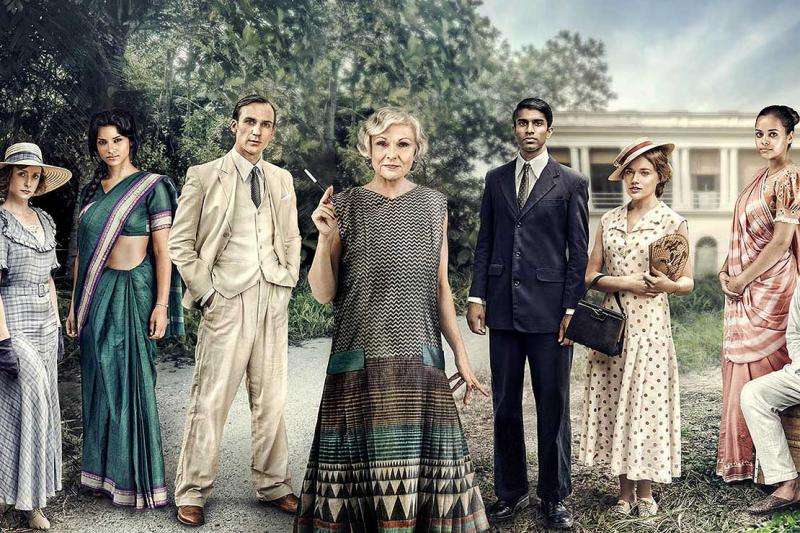New Zealand's 'invisible' Anglo-Indians in new research focus

While the tumultuous world of 19th century Anglo-Indian politics and history has gripped television viewers here with the British television drama Indian Summers, a Massey University social scientist is keen to find out more about the Anglo-Indian population in New Zealand.
Social anthropologist Dr Robyn Andrews has been awarded a $20K grant from the Asia New Zealand Foundation for her research project; "The invisible Indian: The Anglo-Indian Diaspora in New Zealand."
She wants to make contact with as many Anglo-Indians in New Zealand as possible – using archival material and other data – and will conduct interviews to build up a picture of this Indian minority. She will also travel to India to interview Anglo-Indians aspiring to emigrate to New Zealand.
"Anglo-Indians, an Indian minority community, have been migrating to New Zealand since at least the early 20th century, yet they continue to be almost entirely overlooked in accounts of 'Indians' in New Zealand," she says.
Dr Andrews, who is based in the School of People, Environment and Planning at the Manawatū campus, says that although only 327 New Zealanders identified as 'Anglo-Indian' in the 2013 census, there are likely to be many more. Some may not know they have Anglo-Indian origins, or they may choose to identify as 'New Zealander' rather than 'Indian'.
Who are Anglo-Indians?
The official definition under the 1950 Indian Constitution is someone of mixed European and Indian ancestry whose heritage is traced to a European (most often British) father and Indian mother – but not the reverse combination.
Dr Andrews says this is the case because historically it was primarily British men who came to India with the army prior during the rule of the British Raj – between 1858 and1947 – and married Indian women. The definition includes those from Burma, Pakistan and Bangladesh, which were part of India prior to independence from Britain.
Culturally, Anglo-Indians tend to be more 'English' than 'Indian', she says. They speak English as their first language, are Christian (mostly Catholic) and were employed predominantly in the civil and defence services, and teaching.
Anglo-Indians vary in appearance, from being distinctly Indian in their features to more European. Celebrity Anglo-Indians such as British entertainers Engelbert Humperdinck and Cliff Richards are examples of this, respectively.
The distinctive Anglo-Indian cuisine is perhaps the original 'Asian-fusion', incorporating elements of both in iconic dishes like kedgeree.
Anglo-Indian women may wear traditional saris to work in India these days, but not in the home or outside India. But you won't find Anglo-Indians in New Zealand flocking to ex-pat festivals such as Diwali – a Hindu festival of lights – which has become popular in culturally diverse centres like Auckland, she says.
Dr Andrews, whose PhD research was based on the ethnographic study of Calcutta's Anglo-Indian community, says she has found evidence through her research of Anglo-Indians who came here well before 1947 when India gained independence. After that, many Anglo-Indians emigrated to form communities in the UK, US, Canada and Australia, as well as here.
She would like to hear from newly arrived Anglo-Indians, as well as those who are established here and anyone who thinks they might be descended from an Anglo-Indian.
Dr Andrews says that while most people would not be able to distinguish between Anglo-Indians and other ethnic groups from the Indian subcontinent, there are some subtle linguistic clues. For example, Anglo-Indians tend to pronounce the word 'dahl' – the classic Indian spiced lentil dish – as 'doll', rather than 'darl'.
Dr Andrews is also the author of Christmas in Calcutta (SAGE Publications, 2014), a book of Anglo-Indian stories, memoirs and essays that portray the diverse lives and socio-economic positions of the Anglo-Indian community in Calcutta – one of the largest in the world. Her Anglo-Indian husband Keith Butler has published an Anglo-Indian novel, The Secret Vindaloo (Amazon, 2014).
She hopes her research will help raise the profile and wider understandings of a group that has, so far, been invisible in New Zealand. The 10th Anglo-Indian World Reunion will be held in Sydney next January, and Dr Andrews plans to attend with the aim of making connections with more New Zealand Anglo-Indians.
More information: To find out more or to take part in the study, contact Dr Andrews: R.Andrews@massey.ac.nz or go to the project's Facebook page: Anglo-Indians in New Zealand: www.facebook.com/AngloIndiansO … wZealand2015?fref=ts
Provided by Massey University

















